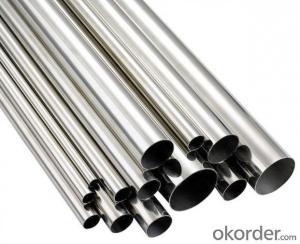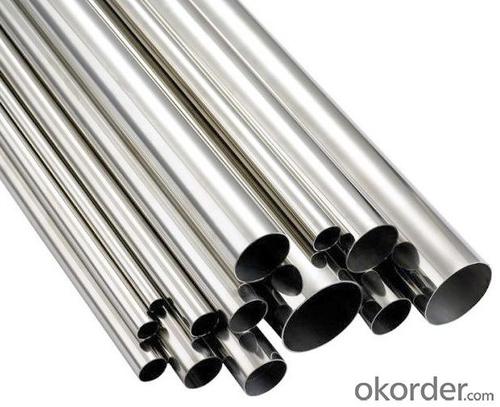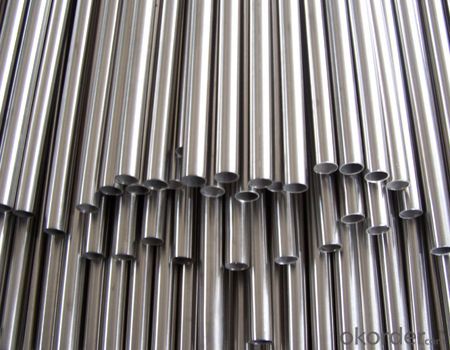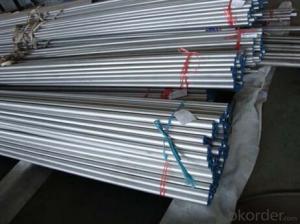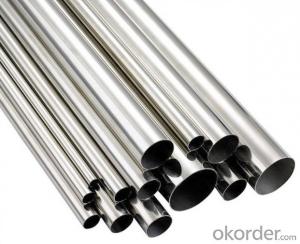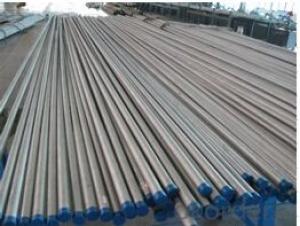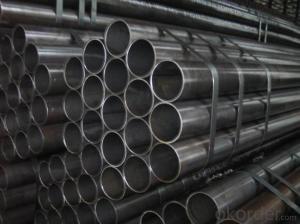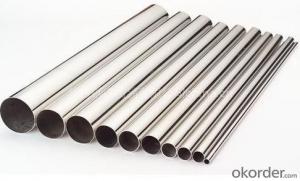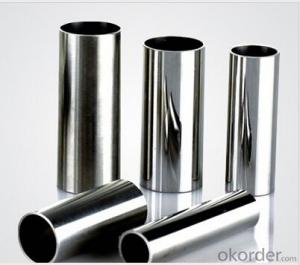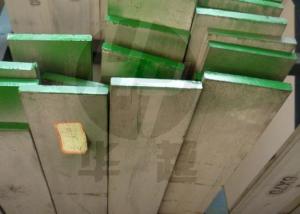Boiler Heat Exchanger Stainless Steel Pipe
- Loading Port:
- Tianjin
- Payment Terms:
- TT or LC
- Min Order Qty:
- 25 m.t.
- Supply Capability:
- 10000 m.t./month
OKorder Service Pledge
OKorder Financial Service
You Might Also Like
Product Description:
1、Structure of Boiler Heat Exchange stainless steel pipe 2507 ASTM A213 Description:
Boiler Heat Exchange stainless steel pipe is often used in the heating system. Heating system, or those stored energy (such as solar energy) in the form of heat, need to be built with the material that can withstand temperatures up to 550 degrees Celsius. High chromium molybdenum welded steel pipe can work in the extreme, which maintain as the ideal material for the construction of power station.
2、Main Features of Boiler Heat Exchange stainless steel pipe 2507 ASTM A213:
• High manufacturing accuracy
• High strength
• Small inertia resistance
• Strong heat dissipation ability
• Good visual effect
•Reasonable price
3、Boiler Heat Exchange stainless steel pipe 2507 ASTM A213 Images:
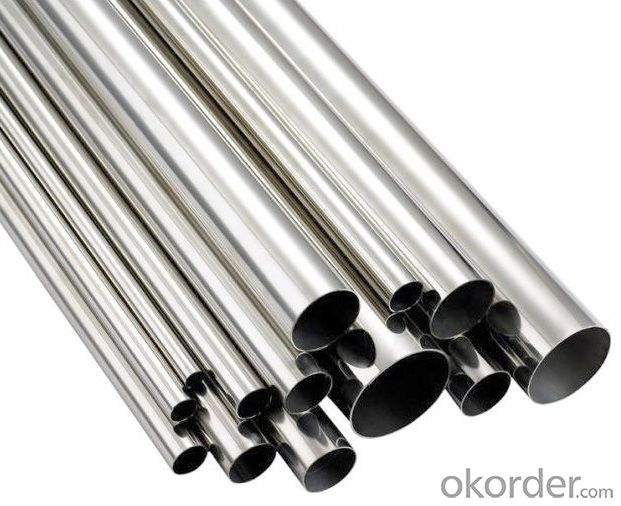
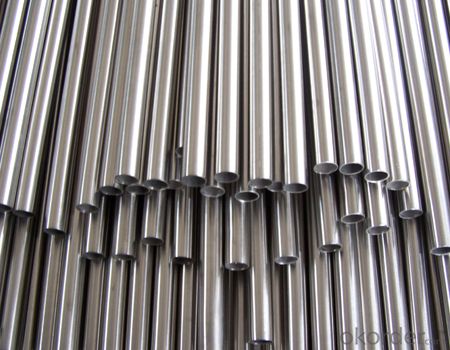
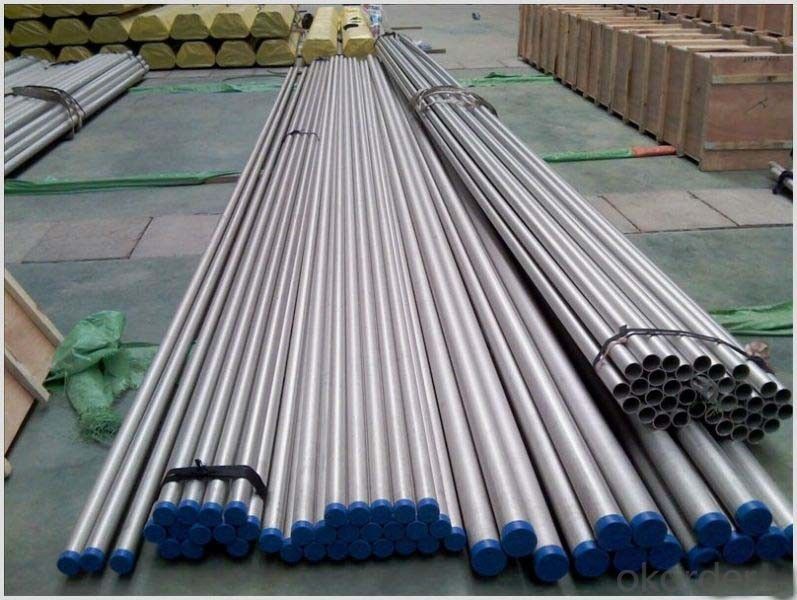
4、Boiler Heat Exchange stainless steel pipe 2507 ASTM A213 Specification:
1)Commodity: heat exchanger pipe
2))Material: 304,316L,304L,316,321,310S,etc
3)Thickness:0.5-100mm
4)Length: 1-14m
5、FAQ of Boiler Heat Exchange stainless steel pipe 2507 ASTM A213:
①How is the quality of your products?
Our products are manufactured strictly according to national and internaional standard, and we take a test on every pipe before delivered out. If you want see our quality certifications and all kinds of testing report, please just ask us for it.
Guaranteed: If products’ quality don’t accord to discription as we give or the promise before you place order, we promise 100% refund.
②How about price?
Yes, we are factory and be able to give you lowest price below market one, and we have a policy that “ for saving time and absolutely honest business attitude, we quote as lowest as possible for any customer, and discount can be given according to quantity”,if you like bargain and factory price is not low enough as you think, just don’t waste your time.Please trust the quotation we would give you, it is professional one.
③Why should you chose us?
Chose happens because of quality, then price, We can give you both.Additionally, we can also offer professional products inquiry, products knowledge train(for agents), smooth goods delivery, exellent customer solution proposals.Our service formula: good quality+good price+good service=customer’s trust
SGS test is available, customer inspection before shipping is welcome, third party inspection is no problem.
Any question, pls feel free to contact us !
- Q: How do you test the quality of stainless steel pipes?
- To test the quality of stainless steel pipes, several methods can be used. 1. Visual Inspection: The first step is to visually inspect the pipes for any visible defects such as cracks, dents, or surface irregularities. This can be done by simply observing the pipes closely and checking for any abnormalities. 2. Dimensional Inspection: The dimensions of the stainless steel pipes should meet the specified requirements. This involves measuring the outer diameter, inner diameter, wall thickness, and length of the pipes using calibrated measuring instruments such as calipers or micrometers. 3. Chemical Composition Analysis: Stainless steel pipes should have a specific chemical composition to ensure corrosion resistance and durability. This can be determined by conducting a chemical composition analysis, which involves using techniques like spectroscopy or wet chemical analysis to check the presence and percentage of different elements in the steel. 4. Mechanical Properties Testing: Mechanical properties such as tensile strength, yield strength, and elongation are crucial indicators of the quality of stainless steel pipes. These properties can be tested through various methods including tensile testing, hardness testing, impact testing, or bending testing. These tests are performed according to relevant industry standards to ensure the pipes meet the required mechanical specifications. 5. Non-destructive Testing: Non-destructive testing methods like ultrasonic testing, X-ray inspection, or electromagnetic testing can be employed to detect any hidden defects or inconsistencies within the stainless steel pipes without causing any damage. These tests are useful in identifying flaws such as cracks, voids, or inclusions that may compromise the quality and performance of the pipes. 6. Corrosion Resistance Testing: Stainless steel pipes are known for their excellent corrosion resistance. To verify their resistance to corrosion, various tests like salt spray testing or exposure to harsh environments can be conducted. These tests simulate real-life conditions to evaluate the pipes' ability to resist corrosion and ensure their long-term durability. It is important to note that the specific testing methods and standards may vary depending on the industry or application requirements. Therefore, it is essential to refer to relevant standards and specifications while conducting quality tests on stainless steel pipes.
- Q: What are the maintenance requirements for stainless steel pipes?
- Compared to other materials, stainless steel pipes have relatively low maintenance requirements. However, to ensure their longevity and optimal performance, there are a few key steps that should be taken. To begin with, it is essential to regularly clean the pipes to remove any dirt, grime, or contaminants that may accumulate on the surface. This can be accomplished by using mild soap and water or a non-abrasive cleaner. It is crucial to avoid the use of abrasive materials or harsh chemicals as they can cause damage to the stainless steel surface. Periodically inspecting the pipes is also recommended to check for any signs of corrosion or damage. While stainless steel is known for its corrosion resistance, there are certain environments or conditions that can still make it susceptible. Addressing any signs of corrosion promptly is important to prevent further deterioration. Protecting the stainless steel pipes from physical damage or impact is another important factor. This can be achieved by avoiding heavy objects from hitting or rubbing against the pipes and using suitable padding or insulation in areas where they may be exposed to potential impact. Lastly, it is crucial to ensure that the stainless steel pipes are installed and used in accordance with their intended purpose and within their specified temperature and pressure limits. This will help prevent any unnecessary stress or strain on the pipes, which could result in premature failure. By adhering to these maintenance requirements, stainless steel pipes can offer long-lasting durability and performance in various applications.
- Q: What are the specifications for stainless steel pipes?
- The specifications for stainless steel pipes typically include the material grade, dimensions (such as outer diameter, wall thickness, and length), and specific standards or certifications they adhere to, such as ASTM, ASME, or EN. Additionally, specifications may also include information about the surface finish, type of joint or connection, and any special requirements for corrosion resistance or mechanical properties.
- Q: Can stainless steel pipes be insulated with cork?
- Yes, stainless steel pipes can be insulated with cork. Cork is a versatile material that is commonly used for insulation purposes. It has excellent insulating properties, including thermal insulation, noise reduction, and fire resistance. Cork insulation is suitable for various applications, including pipes, as it can effectively reduce heat transfer and prevent condensation. Additionally, cork is a sustainable and eco-friendly material, making it a popular choice for insulation. Therefore, using cork to insulate stainless steel pipes is a viable option.
- Q: Are stainless steel pipes suitable for underground drainage systems?
- Yes, stainless steel pipes are suitable for underground drainage systems. Stainless steel is highly resistant to corrosion, making it an ideal material for applications where the pipes will be exposed to moisture and other corrosive elements. Additionally, stainless steel pipes have a long lifespan and require minimal maintenance, making them a cost-effective choice for underground drainage systems. They are also able to withstand high pressure and temperature variations, ensuring the durability and reliability of the drainage system. Overall, stainless steel pipes provide excellent performance and are a reliable choice for underground drainage systems.
- Q: What is the difference between Schedule and Nominal Pipe Sizes for stainless steel pipes?
- Stainless steel pipes can be described using Schedule and Nominal Pipe Sizes, but they have different focuses. Schedule denotes the pipe's wall thickness and is represented by a number. It is a standardized system used to classify pipes based on their wall thickness. The schedule number indicates how thick the pipe is in relation to its diameter. For instance, a Schedule 40 pipe has a thicker wall than a Schedule 10 pipe of the same diameter. The higher the schedule number, the thicker the wall. On the contrary, Nominal Pipe Size (NPS) represents the approximate inner diameter of the pipe and is expressed in inches. NPS is a size designation that doesn't directly correspond to the actual dimensions of the pipe. It serves as a convenient reference for identifying pipes and is often used in conjunction with the schedule number to specify a specific pipe. In summary, the main distinction between Schedule and Nominal Pipe Sizes for stainless steel pipes lies in what they describe. Schedule indicates the wall thickness, whereas Nominal Pipe Size refers to the approximate inner diameter of the pipe. Both factors are crucial when selecting the appropriate stainless steel pipe for a particular application.
- Q: Can stainless steel pipes be used for oil refinery applications?
- Yes, stainless steel pipes can be used for oil refinery applications. Stainless steel is known for its excellent corrosion resistance properties, making it suitable for handling various corrosive substances commonly found in oil refineries. Additionally, stainless steel pipes are durable and can withstand high temperatures and pressures, making them a reliable choice for oil refinery operations.
- Q: Can stainless steel pipes be used for high-pressure applications?
- Yes, stainless steel pipes can be used for high-pressure applications. Stainless steel is known for its excellent corrosion resistance, strength, and durability, making it a suitable material for handling high-pressure fluids or gases. Stainless steel pipes can withstand high pressures without experiencing deformation or leakage, ensuring the safe and efficient transfer of fluids in various industries such as oil and gas, chemical processing, and power generation. Additionally, stainless steel pipes can also withstand extreme temperatures, further enhancing their suitability for high-pressure applications.
- Q: How do stainless steel pipes compare to carbon fiber pipes?
- Stainless steel pipes possess distinct qualities and find usage in diverse fields. Renowned for their robustness and power, they exhibit exceptional resistance to corrosion and can withstand elevated temperatures and pressures. Consequently, they prove suitable for various industries, including oil and gas, chemical, and construction. Boasting an elongated lifespan and the ability to bear heavy loads, stainless steel pipes emerge as a reliable option for numerous applications. Nevertheless, their relatively hefty weight necessitates additional support structures. Conversely, carbon fiber pipes, characterized by their lightness and high strength-to-weight ratio, serve as an alternative. Crafted from carbon fibers embedded in a resin matrix, they yield a formidable and rigid material. Aerospace, automotive, and sports equipment industries commonly employ carbon fiber pipes. Their lightweight nature permits enhanced fuel efficiency in vehicles and augmented performance in sports equipment. However, carbon fiber pipes prove pricier than their stainless steel counterparts and may lack the desired resilience to extreme temperatures or corrosive surroundings. To summarize, stainless steel pipes excel in durability and corrosion resistance, making them well-suited for demanding tasks. Carbon fiber pipes, on the other hand, offer lightweight construction and a commendable strength-to-weight ratio, rendering them ideal for weight reduction-focused applications. Ultimately, the choice between stainless steel and carbon fiber pipes hinges on specific requirements and the trade-offs between cost, weight, and performance.
- Q: Are stainless steel tubes and galvanized steel tubes the same?
- Galvanized steel pipe is common steel pipe, and then the surface coated with a layer of zinc coating, in order to prevent rust, as long as the surface layer is ground, it will rust.
Send your message to us
Boiler Heat Exchanger Stainless Steel Pipe
- Loading Port:
- Tianjin
- Payment Terms:
- TT or LC
- Min Order Qty:
- 25 m.t.
- Supply Capability:
- 10000 m.t./month
OKorder Service Pledge
OKorder Financial Service
Similar products
Hot products
Hot Searches
Related keywords
